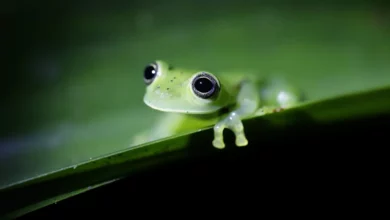One of the fastest trains in the world, the Japanese 500 Series Shinkansen bullet train, was designed to run quietly at high speed and reduce the noise created by air resistance.
Designers accomplished those things by looking to owls for its wing plumage design and the kingfisher's beak for its air-piercing nose cone.The emulation of nature’s genius for human design is the essential philosophy of biomimicry, a term that was coined by biologist Janine Benyus in her book published in 1997, "Biomimicry: Innovation Inspired by Nature.
"Originating from the Greek words bios, life, and mimesis, imitate, biomimicry is the examination of nature, its models, systems, processes and elements that can provide solutions to human problems. Yet, “biomimicry is a lot deeper than imitating nature,” says Sara al-Sayed, biomimicry expert and biologist. “When you imitate, you are plainly copying, while this field revolves around the ‘conscious emulation of nature’ for a more sustainable human design.”
Since Benyus’ talk at the global TED (Technology, Entertainment and Design) conference at Oxford in 2005, where she explained the principles of the discipline, biomimicry has become a cornerstone of sustainable design.
However, innovation inspired by nature has many early examples. Leonardo da Vinci considered it essential to observe the anatomy and flying techniques of birds to create a “flying machine.” Although his machine was never completed, the mere principle of being inspired by nature introduces da Vinci as a biomimicry pioneer along with the Wright Brothers, who derived their inspiration from flying pigeons to construct the first airplane.
Looking at nature with a special focus on how it manages to solve challenges of its own is the solution to developing sustainable technology and design, according to the principles of biomimicry. The observation of the genius of nature made possible “Lotusan,” a self-cleaning silicone exterior paint with a hydrophobic surface that imitates the water-repellent surface of the lotus leaf, as well as the design of the adhesive material “Velcro,” based on the study of the burs and their natural hook-like shape.
“This is not a new field per se,” Sayed explains, “but rather an old one that the modern world seems to have somehow lost.”
She mentions indigenous tribes like the Bedouins in Egypt who constantly look at nature for inspiration as a form of biomimicry.
“The Sinai Bedouins and the Ababda tribe have observed camels for centuries and learned how to use certain plants in medicinal ways.”
Since each ecosystem works in a peculiar way, biomimicry experts try to provide green and sustainable solutions by looking at each specific context. As Sayed explains, the discipline has different fields of application, from industrial design to engineering and management in order to investigate projects’ designs.
In Egypt, modern biomimicry remains a nascent field. Sayed is the only biomimic expert in the Middle East to have attended an educational program promoted by the US Biomimicry Institute in Montana, which brings together experts in different fields to learn about biomimicry and become champion spokespeople and experts in the field.
With this knowledge, they can provide some help to companies in various fields faced with challenges and bring provide them with solutions by questioning what nature would do.
“The main idea is to bring different disciplines together to resolve certain challenges, with nature as the source of inspiration,” Sara explains.
Sayed is trying to create a group of experts in Egypt who would start operating in the Middle East and look at nature and the solutions it brings from different viewpoints.
“One of the emerging fields of biomimicry, which is gaining growing recognition in Egypt, is permaculture,” she explains, “which aims at looking at a system of organisms and their interaction rather than just looking at one isolated organism.
“I feel that for Egypt, we should be using nature as an inspiration to deal with pertinent issues such as food security, water challenges, garbage disposal, and air pollution,” the biologist says.
According to Sayed, the imitation of nature shouldn’t raise ethical nor religious concerns, since biomimicry doesn’t aim at reproducing the perfection of nature but rather to understand it and cooperate with it.“
Most religions in their essence have a certain respect and admiration for nature,” Sayed says. “Looking at organisms, the way they function and what they mean to us is not new in Islam, and Muslim scholars have done it repeatedly across history. Biomimicry aims at taking nature as an inspiration for a more concrete sustainable living.”
A new online resource, asknature.org, has the ambition to register all known nature designs – the shape of animals and plants mostly – as well as information on how organisms, parts of organisms and systems function in order to be an inspiration for biomimicry experts. The open source project wishes “to connect innovative minds with life’s best ideas, and in the process, inspire technologies that create conditions conducive to life.”
The shift from traditional thinking of learning about nature to learning from nature is the new challenge biomimicry presents to biology.




